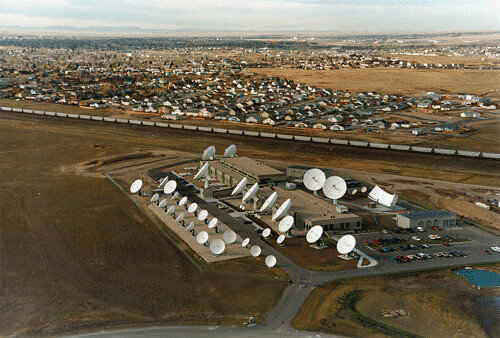Arctic Russian Telecom
Wednesday, October 24th, 2007 
Gilat’s SkyEdge Networks will be expanding their satellite-Internet services in the Russian-arctic North.
Gilat Satellite Networks Ltd. (Nasdaq:GILT) today announced that North-West Telecom, one of Russia’s largest telecommunications companies, is expanding its Gilat SkyEdge satellite network to bring telephony and broadband Internet services to a growing number of remote communities in North Western Russia.
North-West Telecom originally deployed a SkyEdge VSAT network earlier this year to serve several hundred sites in the Arkhangelsk region. The network expansion will serve many more sites in the Murmansk, Karelia, Komi and Vologda regions and will comprise hundreds of SkyEdge Pro VSATs and more than 60 SkyEdge Gateways that provide high-speed mesh trunking and IP connectivity.
North-West Telecom’s deployment of the SkyEdge VSAT network fulfills a Universal Service Obligation (USO) to meet the modern telecommunications requirements of rural communities. The network is operated by Russia’s leading satellite service provider, Global-Teleport, which will use its SkyEdge satellite hub station based near Moscow. Gilat has been working closely with Global-Teleport to develop several major communications networks in Russia.
“This is the third major USO project that we are deploying based on Gilat’s SkyEdge product. Combined, those projects span Russia. The expansion of the North-West Telecom project reflects the successful completion of the first phase this year," said Alexey Ostapchuk, General Manager of Global-Teleport. “Gilat’s effective combination of leading-edge technology, seamless integration to our existing network, and global experience in USO projects have opened new opportunities for us in the Russian telecom market," he added.
Arie Rozichner, Gilat’s Regional Vice President, Eurasia, said, “A contributing facet of our success in Russia has been our local office that provides the support that our customers require. North-West Telecom’s decision to expand its network with SkyEdge means that our VSATs will continue to help improve the quality of life for citizens in North Western Russia’s rural areas.”
Gilat’s SkyEdge is a satellite communications system that delivers high-quality voice, broadband data and video services over a powerful unified system. SkyEdge represents Gilat’s extensive knowledge base and field-proven product offering, acquired through two decades of experience. SkyEdge’s flexible architecture and efficient space segment utilization make it an ideal platform for operators and service providers.
For an idea of just how "out-there" these provinces are, check out this map. Murmansk, for example, is well above the arctic circle, home port to Atomflot, the world’s only fleet of nuclear-powered ice breakers, and an important Russian naval base. The average January low in nearby Arkhangelsk? Try two degrees farenheit.
To their credit, NW Telecom has been able to brave the cold now for a while: they are celebrating their five-year anniversary by exhibiting at InfoCom-2007 in Moscow, which opened today.



 The company is controlled by Istanbul-based conglomerate Cukurova and Providence Equity Partners, a private equity group specialising in media, entertainment, communications and information services. The pair are selling down their holding from 100 to 75 per cent.
The company is controlled by Istanbul-based conglomerate Cukurova and Providence Equity Partners, a private equity group specialising in media, entertainment, communications and information services. The pair are selling down their holding from 100 to 75 per cent.





